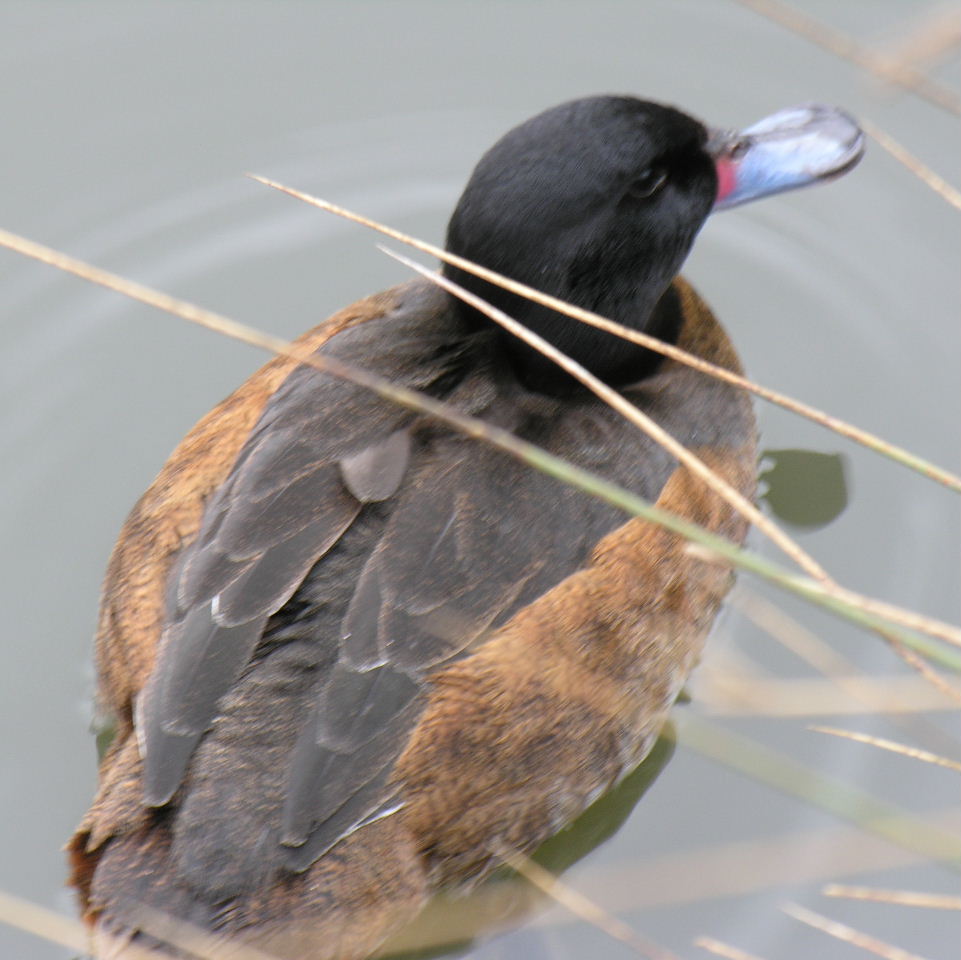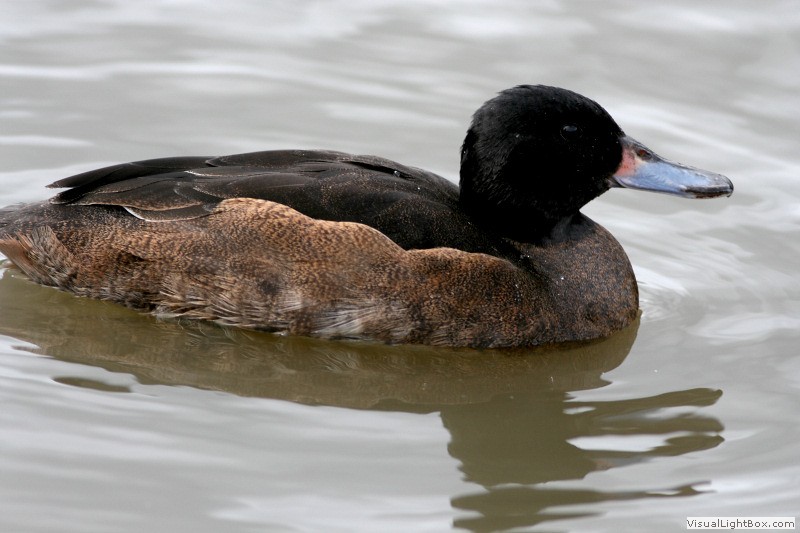
Heteronetta atricapilla
SUBFAMILY
Oxyurinae
TAXONOMY
Anas atricapilla Merrem, 1841, Buenos Aires. Monotypic.
OTHER COMMON NAMES
French: Hйtйronette а tкte noire; German: Kukkucksente;
Spanish: Pato Rinconero.
PHYSICAL CHARACTERISTICS
13.8–15.8 in (35–40 cm); 1.1–1.3 lb (513–565 g). Black head
and upperparts, mottled brown underparts.
DISTRIBUTION
Santiago, Chile, in west, to Paraguay and Buenos Aires
province, Argentina, in east.
HABITAT
Freshwater wetlands with abundant emergent vegetation in
open or sparsely vegetated regions.
BEHAVIOR
Not known.
FEEDING ECOLOGY AND DIET
Feeds on seeds, plants, and some aquatic invertebrates by diving,
dabbling, head-dipping, upending, and mud-filtering.
REPRODUCTIVE BIOLOGY
Probably seasonally monogamous for only short periods of time.
Breeding mostly between Sept. and Dec. Only completely parasitic
anatid. Female lays on average 2 eggs in the nests of other
waterfowl, especially coots (Fulica) and rosy-billed porchard.
CONSERVATION STATUS
Common throughout its range, but may be threatened by habitat
loss, hunting, and pollution.
SIGNIFICANCE TO HUMANS
Hunted for food.
Photo Gallery of - Black-headed duck




 Animalia Life
Animalia Life